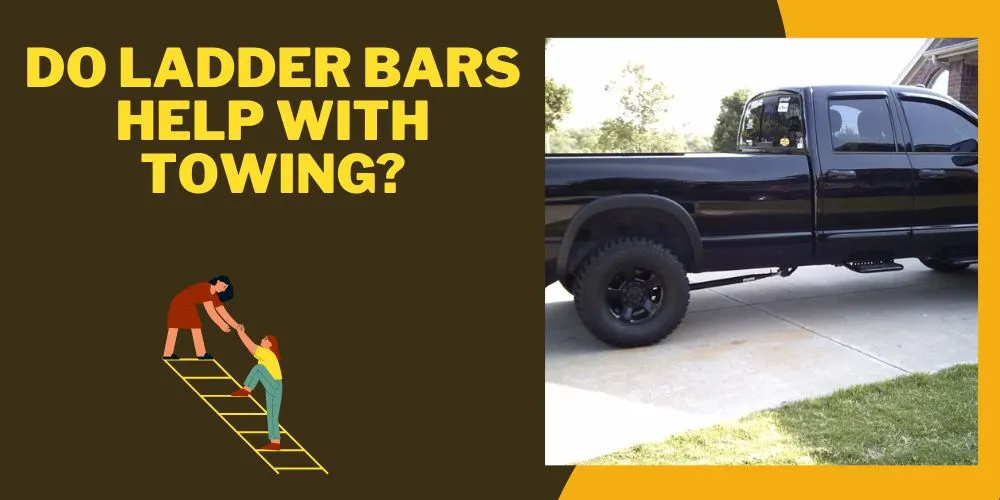While constructing or repairing a building, the safety of workers is a paramount concern.
Scaffolding systems are, without doubt, an integral part of construction sites.
But, do you know why scaffolding toe boards and handrails are important?
Well, don’t worry, even if you don’t, because this article delves into the significance of incorporating two essential components of scaffolding systems: toe boards and handrails.
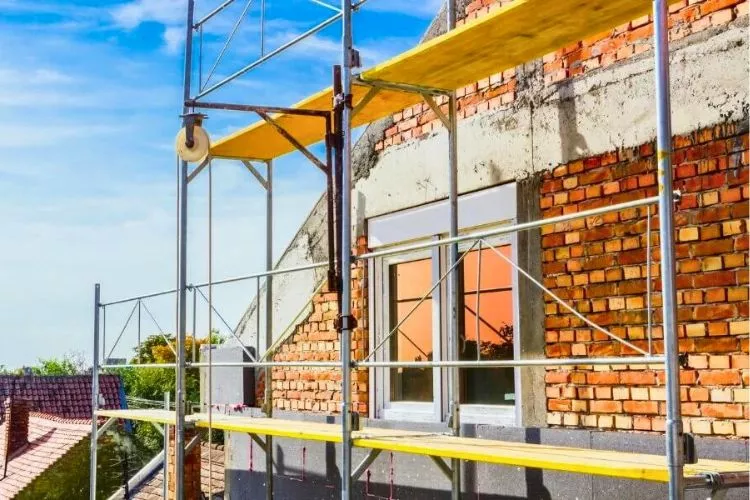
By understanding their critical role in preventing falls and potential injuries, industry professionals can ensure a safer work environment, and enhance the overall efficiency and productivity of their projects.
Why Scaffolding Toe Boards and Handrails are Important?
Scaffolding in construction provides a temporary structure that allows workers to reach heights safely and efficiently. However, without proper safety measures, scaffolding can be a place of high risk.
This is where scaffolding toe boards and handrails step in, offering critical protection against numerous risks and enhancing the safety and productivity of construction projects. Let’s delve into the reasons for their importance:
- Prevention of Falls: Toe boards and handrails act as barriers that prevent workers from accidentally stepping off or falling off the edge of a platform. Handrails provide something for a worker to hold onto, significantly reducing the chances of a slip or a fall.
- Safety from Falling Objects: Toe boards aren’t just foot barriers – they also prevent tools or materials from falling off the scaffolding and injuring people working or walking below. This ensures that even if an object is unintentionally dropped, it doesn’t pose a safety risk to others.
- Legal Compliance: Many countries have stringent laws for construction site safety. These laws often mandate the use of safety mechanisms, including toe boards and handrails on scaffolding, to ensure the well-being of workers. Non-compliance can lead to legal repercussions, including hefty fines, site closure, and prosecution.
- Increased Confidence: With appropriate safety measures in place, workers generally feel more secure and confident. This boosts overall morale and can indirectly enhance productivity and efficiency on the construction site.
- Risk Mitigation: Incorporating toe boards and handrails significantly mitigates risks associated with insurance claims and accident-related costs. Any construction accident can be detrimental to a company’s reputation, and the financial implications can be significant.
In conclusion, scaffolding toe boards and handrails are non-negotiable components of construction safety. By ensuring their proper installation and use, industry professionals can create a safer work environment that is conducive to productivity and efficiency.
Working at heights doesn’t have to be perilous with the right safety measures in place.
What is the Minimum Height of Toe Board in Scaffolding?
Scaffolding toe boards serve as a critical safety component to prevent objects, tools, and debris from falling off the platform and posing hazards to workers or pedestrians below. They also prevent workers from accidentally stepping off the platform.
According to the Occupational Safety and Health Administration (OSHA) standards, the minimum height of a toe board should be 3.5 inches (approximately 8.9 centimeters, or 0.11 feet) from its top edge to the level of the walking or working surface.
This measurement applies whether the toe board is made of wood, solid or perforated metal, or other substantial material.
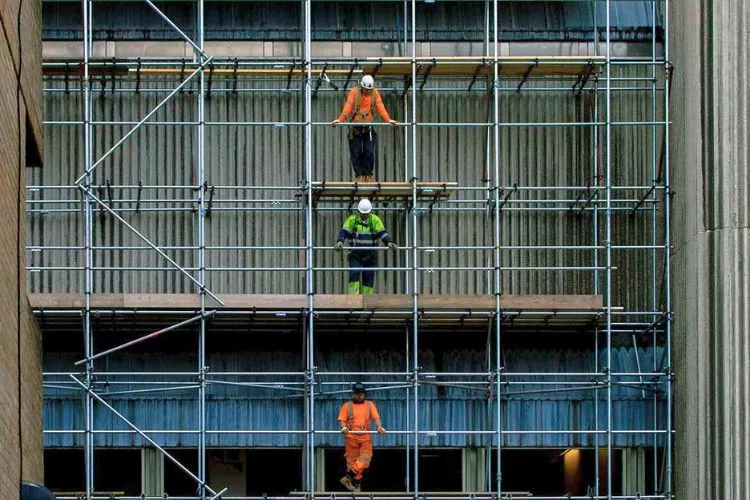
Moreover, OSHA requires that toe boards be erected along the edge of platforms more than 10 feet above lower levels for a distance sufficient to protect employees below. If objects piled, grouped, or stacked near the edge could potentially go higher than the top edge of the toe board, OSHA indicates that a panel or screen should extend from the toe board or platform to the top of the guardrail’s required height.
With adherence to these rules, employers and their employees can create safer and more efficient work environments, helping to prevent severe accidents and meet legal requirements.
Scaffolding Toe Board Requirement
The regulations specify a few important requirements relating to toe boards on scaffolding.
- Height: As mentioned above, the height of the toe board should be at least 3.5 inches from the top edge to the level of the working surface.
- Strength and Material: Toe boards must be made of solid or substantial material, such as wood or perforated hard plastic, and must be strong enough to prevent objects from falling off the edge of the platform.
- Installation: Toe boards should be securely fastened and installed in a way that they do not create any tripping hazard to workers on the scaffolding.
- Additional Barriers: If there is a risk of objects falling over the top of the toe board, OSHA requires the installation of additional protection, such as a screen or mesh.
Complying with these requirements not only ensures the safety of employees but also provides legal protection for organizations, minimizing the risk of accidents and related costs.
What is the OSHA regulation for toe boards on scaffold?
According to OSHA regulations, toe boards must be erected along the edge of platforms more than 10 feet (3.1 m) above lower levels for a distance sufficient to protect employees below.
Toe boards should be at least 3.5 inches (9 cm) in height and firmly secured on the scaffolding to prevent any displacement. It’s important to comply with these regulations to ensure the safety of workers on scaffolding platforms and those working or walking below.
What is the leading cause of scaffold accidents?
The leading cause of scaffold accidents is falling from the scaffolding. There are several factors that contribute to these falls and the subsequent accidents, which include improper scaffolding construction, human error, and negligence in following safety regulations.
By adhering to scaffolding safety protocols and providing proper training, a significant number of injuries and fatalities can be prevented each year.
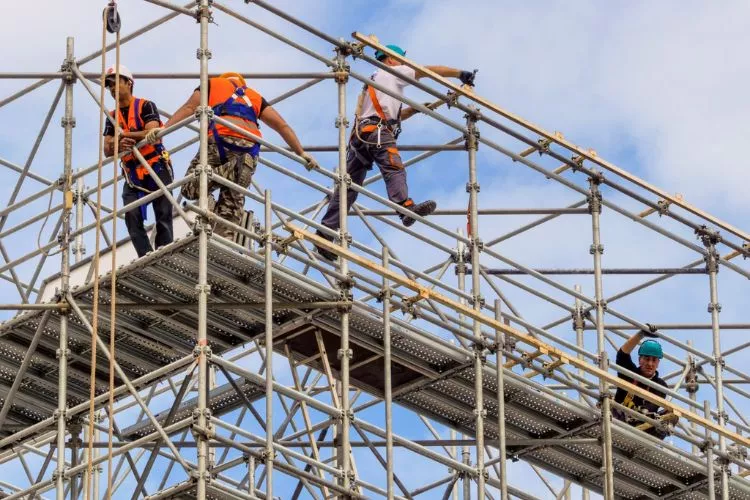
Some of the common factors contributing to scaffold accidents are:
- Improper Scaffolding Construction: Failure to firmly affix all attachment points, install necessary bracing, or set up guardrails can lead to unstable scaffolding and increase the risk of falls.
- Insufficient Training or Lack of On-The-Job Training: Workers who are not adequately trained in scaffold construction and usage may make critical errors, thus, increasing the likelihood of accidents.
- Inadequate Fall Protection: The absence of appropriate fall protection measures, such as guardrails and personal fall arrest systems, can exacerbate the risk of falling from scaffolding.
- Ignoring Safety Rules: Disregarding established safety rules during scaffold construction, inspection, or usage can contribute to catastrophic consequences.
- Defective Equipment: Using faulty or substandard materials during scaffolding construction can weaken the structure, raising the risk of accidents.
Enhancing worker safety and minimizing scaffold accidents requires strict adherence to established safety regulations, such as OSHA laws. Ensuring proper scaffold construction, providing adequate training, and maintaining regular inspections can significantly reduce the leading cause of scaffold accidents – falls.
What are the three most common scaffolding violations?
The Occupational Safety and Health Administration (OSHA) sets the standards for scaffolding safety, and violations of these can lead to severe consequences. Based on the information gathered, the three most common scaffolding violations according to OSHA are as follows:
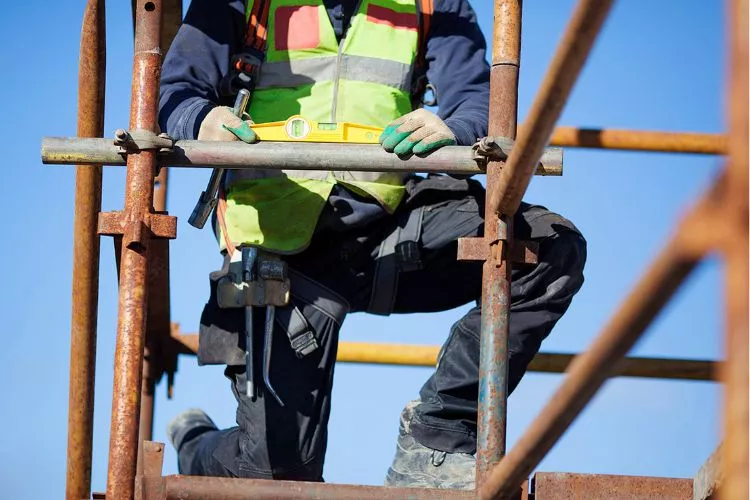
- Use of Fall Protection While in a Basket: The most common violation is not using enough or appropriate fall protection systems. These include safety guards, harnesses, lanyards, etc. OSHA Standard 1926.453 (b) (2) (v) states that while working from an aerial lift or a scaffold, workers must use a body belt with a lanyard attached to the boom or basket.
- Use of Fall Protection Above 10 Feet: Another standard that is commonly violated is OSHA’s regulation mandating the use of fall protection systems from heights greater than ten feet.
- Improper Scaffolding Construction: This refers to scaffold structures that do not meet OSHA’s construction standards, causing significant safety risks. The improper assembly and disassembly of scaffolding are also part of this violation.
What does OSHA say about scaffolding?
As to what OSHA says about scaffolding, they have set specific standards and guidelines to prevent scaffold-related accidents. OSHA emphasizes that workers need protection from falling and protection from falling objects when working on scaffolds.
They further recommend that workers use either personal fall arrest systems or guardrail systems for fall protection.
Additionally, OSHA specifies the need for training employees on scaffold usage and hazards before allowing them to work on scaffolds. The OSHA scaffolding standard (29 CFR 1926 Subpart L) provides detailed requirements for scaffold design, construction, and use.
In conclusion, adhering to OSHA regulations is critical for the safety of workers and the success of construction projects. Abiding by these rules can prevent the vast majority of scaffolding-related accidents.

